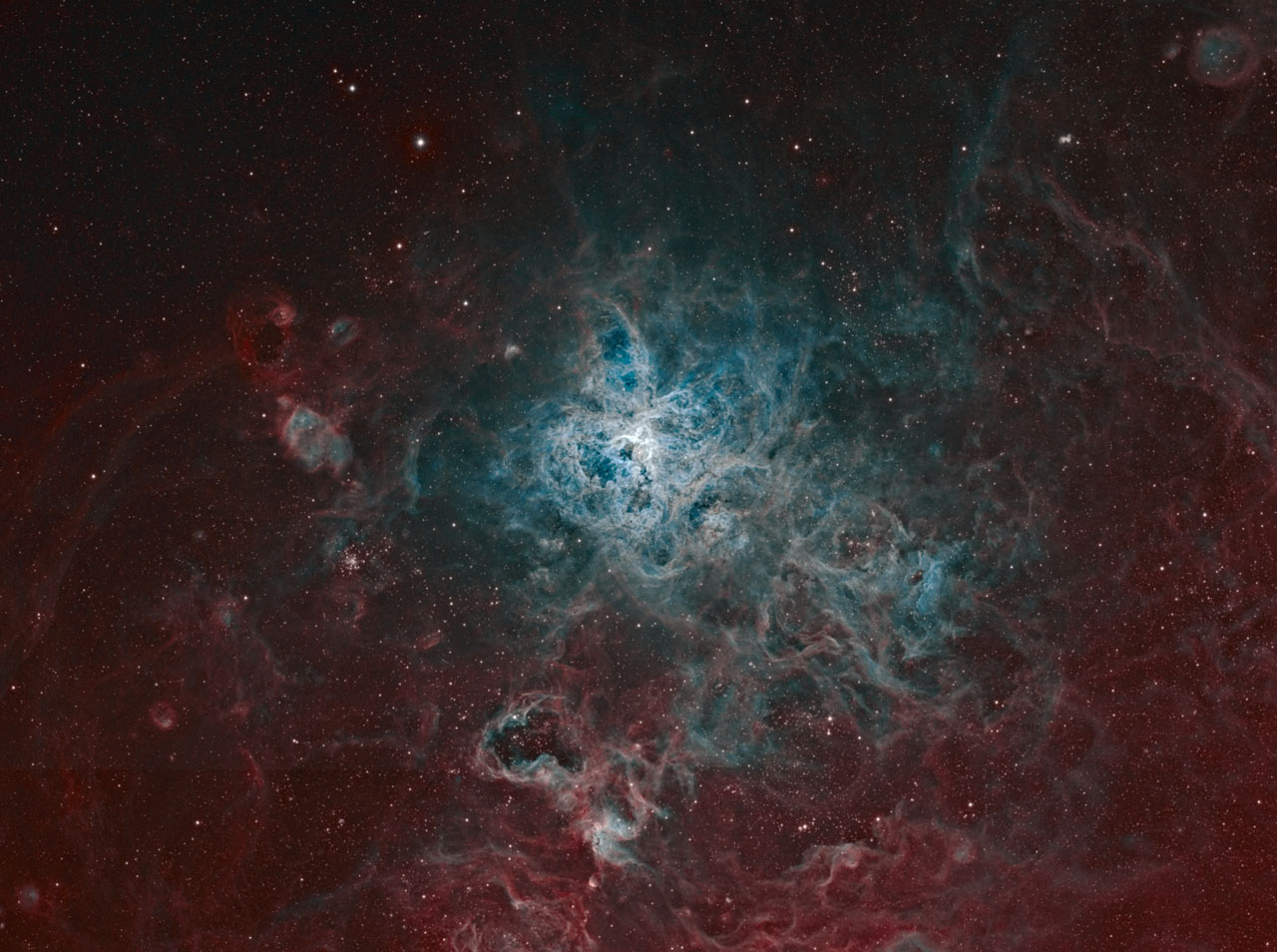The weather has been bad in Australia lately, so image data collection has slowed to a trickle. But that is only part of the reason I haven’t posted any images from Australia lately. The main reason is that I’ve just been too busy to process the images that were captured many weeks ago. Another reason is that I’m moving to a different application for the the front end processing. I have been using MaxIm DL for many years (for both capture and front-end processing), and am now moving to CCDStack. I like the simplicity of MaxIm DL, but it wasn’t giving me as much control as I wanted. This is my first attempt at processing with CCDStack. I still have lots to learn about it, but am pretty happy with this as a first attempt.
The subject is the Tarantula Nebula (NGC2070). By the name you might expect that I captured the image from my current location in the desert, but it’s actually not visible from here.
Located in the Large Magellanic Cloud (LMC), the Tarantula is about 160,000 light-years from Earth – much farther than the nebulae I usually photograph. The fact that it fills the frame at such great distance also means that it is very large. And bright. According to Wikipedia, if it were as close to Earth as the Orion Nebula is, the Tarantula would cast visible shadows!
I used only the narrowband data for this image (H-a, O-III, and S-II), but also captured LRGB data, and might get around to processing it again to include that data. As I often do, I combined the channels by first making a bi-color image with the S-II and O-III data, then applied the H-a image as luminance. There is about 4 hours of integration for each channel, or 12 hours total.
It took a while to get started with CCDStack because the tutorial provided for it was written for an earlier version, so following it directly was impossible or resulted in strange behavior. Fortunately, a friend who is experienced with CCDStack was able to guide me through the process. After that, I was pleased with how it works, and I’m looking forward to using it more. There is at least one more set of image data ready to be processed, and it is something I have wanted to shoot for a long time, the Witch Head Nebula. This is a very large and faint reflection nebula. And from the Portland area it is only visible in the Winter – meaning that it is almost never visible because we are under clouds all Winter. The capture from Australia consists of 2 “panels” because it doesn’t fit in a single frame. Indeed, it barely fits in 2! But that makes the processing a bit more tricky, and certainly more time consuming, so it will probably not be making an appearance here very soon.
Don’t forget the lunar eclipse coming up Sunday night. The weather forecast here is most annoying: We will have clear skies both before and after the eclipse, but nearly 100% cloud cover during the eclipse! You never know – it could end up being very different from the forecast. In any case, I hope you get to see it.
